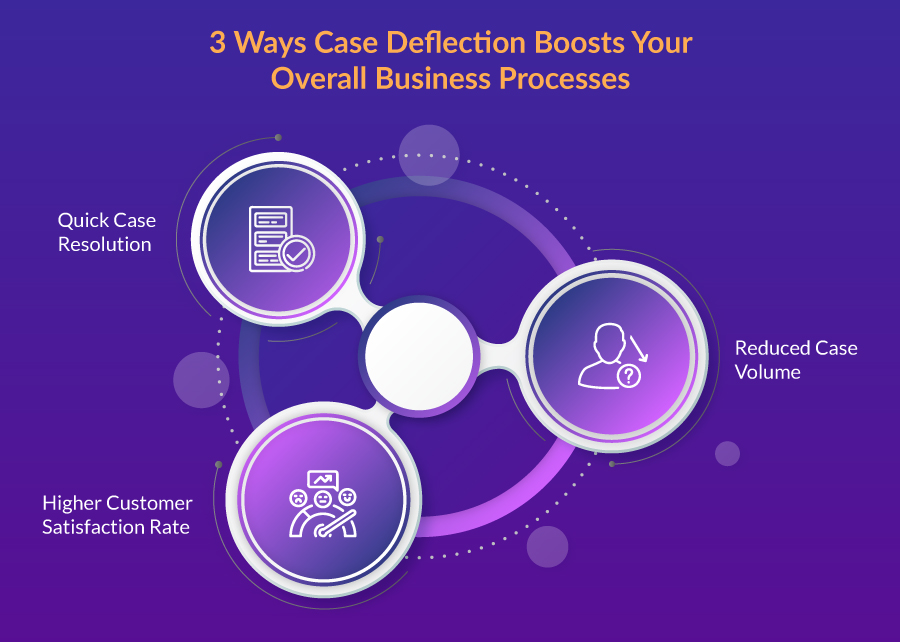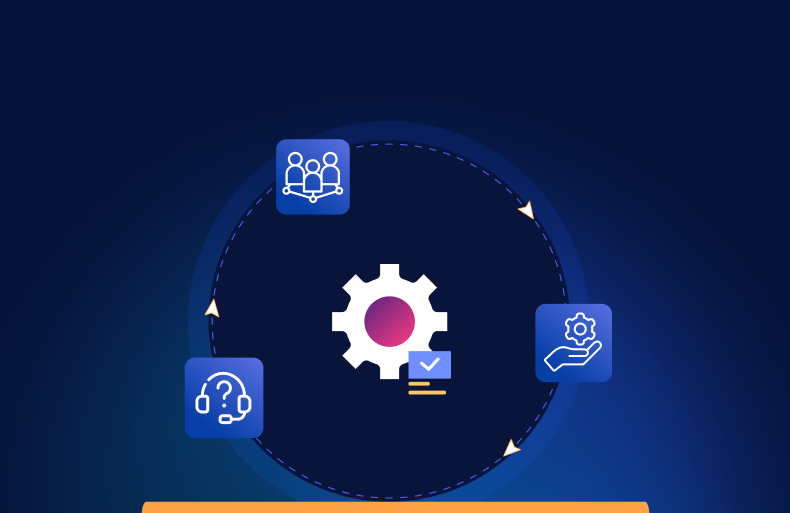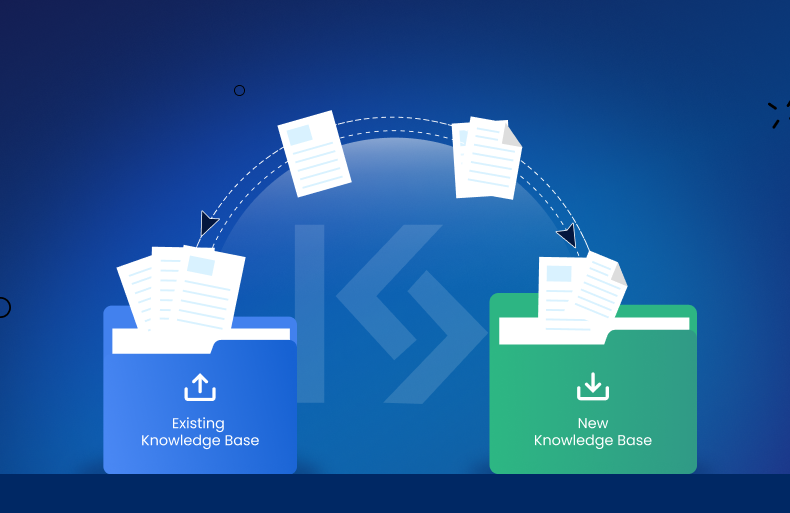Improving Case Deflection With Community-Support Platform Integration
Thriving businesses, among many things, wield unparalleled support delivery as their weapon to combat this fierce competition. It may work for now, but this might not be the case in the long run without a data-driven, strategic approach.
So, is there a permanent solution to this problem?
Of course, there is! An organized knowledge base that offers an exceptional self-service experience to the customers, all while increasing the case deflection rate.
Before we jump into the ‘why’ and ‘how’ of case deflection, let’s understand the ‘what’ of it!
What is Case Deflection?
When your customers run into a problem and find solutions independently without asking for assistance from the support team, it is called case deflection. A potential problem that was initially intended to go to your support team, but was resolved independently. That’s why a majority of organizations invest in an efficient self-service strategy.
For more clarity, here’s an example:
Let’s say your customer is having trouble uploading files to your system. So, they decided to reach out to your customer support. While raising a ticket, they came across a discussion thread. The discussion thread discusses various ways to overcome similar issues. And that’s how your customer, who was initially going to report an issue, resolved it even before reaching your support staff.
Without case deflection, the customer must submit the request and wait for the assistant’s response. And, your customer agents will receive a higher volume of queries than needed.
3 Ways Case Deflection Boosts Your Overall Business Processes
More than 70%[i] of customers prefer self-service.
And, as a business, delighting your customers should be your priority.
However, self-service is more than just a ‘preference’ of your customers. It leads to case deflection. And, there are numerous business benefits of case deflection, including:

- Quick Case Resolution: With the ability to find the right resources, customers no longer have to wait for support agents’ responses. They can get started with troubleshooting and experience quicker case resolution.
- Reduced Case Volume: As we’ve mentioned, a majority of customers prefer self-service. However, they don’t always find the right resource to resolve their queries on their own. Equipping them with relevant help resources will significantly reduce the number of cases created. As a result, your support reps can focus on delivering quality support.
- Higher Customer Satisfaction Rate: Leverage effortless self-service to delight your customers. And, when your customers experience rapid case resolution, it results in increased CSAT (Customer Satisfaction) scores.
How to Measure Case Deflection?
At first, case deflection may seem like an intangible value to measure since users don’t explain it directly. However, it plays a crucial role in elevating your overall CX. Thus, the better you understand it, the better you’ll be able to improve it.
Let’s take a look at some ways to measure the case deflection rate –
Scenario 1: Number of Clicks on Knowledge Resources

When your customers encounter a problem, they will probably look for a guide or manual in your knowledge base. If they search for a particular topic, click on the relevant topics, and leave without escalating the case, chances are they’ve found a suitable solution. So, it is a fitting example of case deflection.
To measure the case deflection rate achieved through the knowledge base, use this formula:

Let’s assume that the number of clicks was 100 and search sessions were 200, then the overall impact would be 100/200×100 = 50%.
Scenario 2: Number of Clicks on Case Escalation
Let’s say a user doesn’t search for the topic and directly goes for logging a case. However, while creating the case, they see a list of relevant cases along with their solutions in the form of discussion threads, tutorials, articles, etc. So, instead of escalating their case, they click on relevant cases and proceed with self-service. This is another great example of case deflection.
The same formula as above can be used to measure this type of case escalation:

Let’s assume the same values as above. The number of clicks was 100, and search sessions were 200, then the overall impact would be 100/200×100 = 50%.
Community-Support Platform Integration: A Surefire Way to Improve Case Deflection
Now that we know what case deflection is and how to measure it, it’s time to understand how to improve it. One turnkey solution is to create a rich knowledge base library. But if you have a rich knowledge base in your support platform, and your customers are looking for answers in your community, it defies the entire purpose of having a knowledge base.
This is where KaseSync comes in. Designed and developed by Grazitti Interactive, KaseSync bridges the gap between your support platform and your community by seamlessly integrating the two. It ensures customers always have access to the most relevant knowledge resources, right where they’re searching.
So, how does KaseSync make all this possible? By equipping your community and support with the following features:
Smart Case Deflection with Federated Search
KaseSync supports federated search to improve case deflection by delivering the most relevant resources before community members escalate their issues. This effectively reduces the number of support tickets and eases the overall support workload.
KB Sync
KaseSync’s KB Sync feature simplifies and strengthens knowledge base synchronization, ensuring secure, efficient, and accurate content transfer between community and support platforms. By keeping your articles consistent and current, it directly supports case deflection, enabling customers and agents to quickly find the right answers without escalating to support. Here’s how KB Sync helps improve case deflection:
- Bidirectional Synchronization: Real-time two-way syncing keeps all platforms up to date with the latest knowledge articles and edits. This ensures customers always access the most relevant information, reducing unnecessary support cases.
- Mapping and Customization: Seamless field mapping ensures accurate content migration, maintaining consistent article types, metadata, and structure, so users can easily find and trust the information provided.
- Retaining the Article State: Article status (e.g., draft, published) is preserved during sync, ensuring that only finalized, vetted content is exposed to users. This maintains content integrity and credibility, which are critical to successful case deflection.
Conclusion
Lacking a streamlined knowledge base can be a bigger barrier to your overall customer experience than you realize. To overcome this, a streamlined business workflow is essential—and that’s exactly what KaseSync enables. By integrating your community and support platforms, KaseSync ensures that customers have immediate access to relevant and accurate information. This not only boosts self-service and case deflection rates but also increases community engagement and customer satisfaction.
Reference
[i] Gartner










